There is no better time to be in Göttingen than when students are graduating with a doctoral degree. The streets fill up in celebration with beaming graduates, as well as their professors and friends, who jauntily open bottles of beer. The gathering culminates at the Gänseliesel – the statue of a young girl holding a goose – who ends the ordeal of the graduate by letting him or her plant a kiss. She is indeed the most kissed girl in the world.
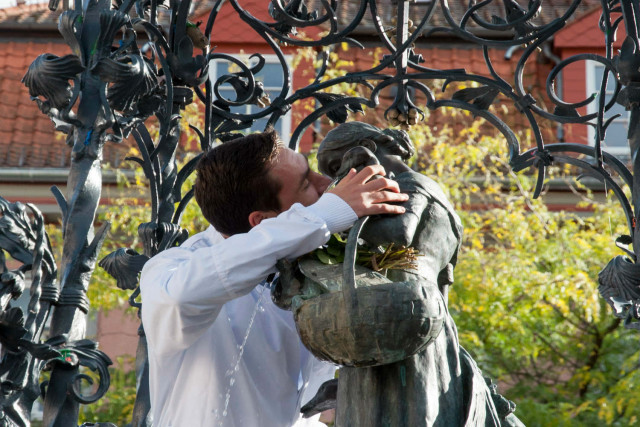 A graduate kissing Gänseliesel describes it as the most relieving kiss. Photo: courtesy of Jeroen Buil
A graduate kissing Gänseliesel describes it as the most relieving kiss. Photo: courtesy of Jeroen Buil
A charming town in central Germany, Göttingen thrives as a community of academically-minded people, with a heart to match when its values are offended. Not surprisingly, the seeds of this attitude date back to 1837.
When the Kingdom of Hanover crowned Ernest Augustus as its new king, a group of seven professors protested against his move to repeal the constitution. They were led by Friedrich Dahlmann, a historian and politician who had co-authored the constitution himself and wanted to uphold its liberal values.
Among those who joined him were the not-yet-famous Grimm brothers, and Wilhelm Weber, a noted physicist. By refusing to swear an oath to the king, they called upon his wrath and were collectively fired, with three of them being banished from the kingdom. The story of the Göttingen Seven is an insignia of the scientific spirit that goes hand-in-hand with civil responsibility. Göttingen certainly continues to do its share.
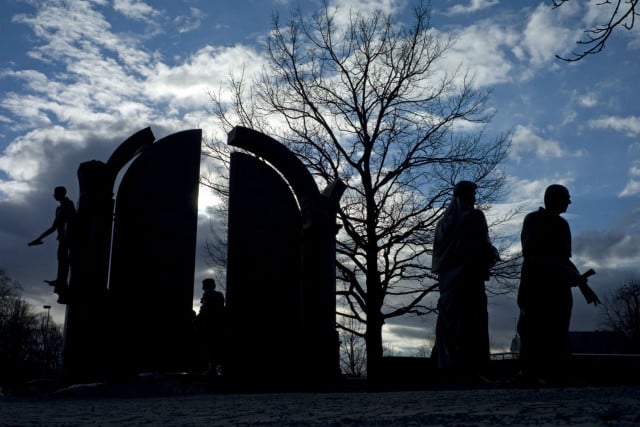 Statue of the Göttingen Seven in nearby Hannover. The three banished professors stand outside the gates of the kingdom. Photo: DPA
Statue of the Göttingen Seven in nearby Hannover. The three banished professors stand outside the gates of the kingdom. Photo: DPA
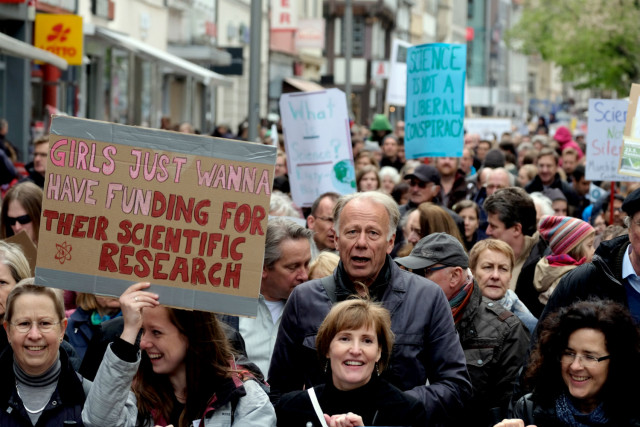 Civil responsibility continues: Scientists leading a March for Science in Göttingen (2017) to support evidence-based policies for the public. Photo: DPA.
Civil responsibility continues: Scientists leading a March for Science in Göttingen (2017) to support evidence-based policies for the public. Photo: DPA.
A Nobel legacy
Next to the Gänseliesel stands a statue of the hunchbacked Lichtenberg: the first professor of experimental physics in Germany. His demonstrations of electricity and his encouragement to question every known fact in physics made him very popular with the students. He discovered the basic principle of xerographic copying, a dry photocopying technique, and was also the first to install a modified version of Benjamin Franklin’s lightning rod in Germany to protect people from getting electrocuted inside buildings.
A busy Robert-Koch-Straße cuts across the city connecting the central and north campuses. Robert Koch won the Nobel prize in 1905 for his discovery of bacteria that cause tuberculosis.
A series of memorable wins followed, including scientists such as Max Planck and Otto Hahn, literary figures like Rudolf Eucken and Günter Grass, and a Nobel Peace prize winner Ludwig Quidde. Overall Göttingen is associated with 44 Nobel prize winners, including Erwin Neher and Stefan Hell who continue to teach here today.
Neher developed the patch-clamp technique to record movement of ions across a single channel in the cell membrane. Hell invented STED microscopy and revolutionized the field of imaging by throwing open a nanoscale view of living cells. One day, they will probably have streets named after them too.
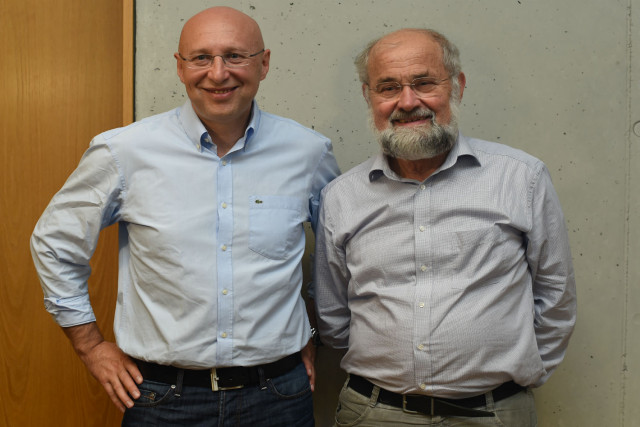 Nobel prize winners Stefan Hell (left) and Erwin Neher (right). Photo: DPA.
Nobel prize winners Stefan Hell (left) and Erwin Neher (right). Photo: DPA.
Up in the North Campus stands the German Primate Center (DPZ), one of the most unique institutions in all of Europe. It houses rhesus macaques, baboons, marmosets – and even ring-tailed lemurs from Madagascar.
From the methods of transmission of HIV virus, to observing monkeys in Senegal, Peru and Thailand, to developing novel setups which animals can enter for task-training at a time of their own choice,to brain imaging studies in humans – the DPZ is creatively evolving to address all primate concerns, and is sensitive to their utmost welfare in the process.
If you’ve ever wondered what scientists do with monkeys and why they need them, here is your chance to find out! Join in for one of their guided tours. You won't be disappointed.
Culture in the after-hours
The city has much to offer to spontaneous visitors. The Dreamcatchers host international, open-stage events at Nörgelbuff to showcase all forms of artistic talent. The eclectic performances include a recitation of Chinese poetry, Korean pop songs, and a demonstration of Acroyoga.
Every Tuesday, an open air Salsa evening at Waageplatz (organized by students) welcomes all those who answer its call for company and playful exploration.
For one night every November, the Zentralmensa (central canteen) transforms from the hustle and bustle of lunching students to the feel of a dungeon concert. The campus hosts an event of Full Metal Mensa featuring bands such as Napalm Death and The Crawling in 2018, and Obscurity and Izegrim in the past. A mix of local and international talent tears the skies, beckoning an inevitable mosh pit.
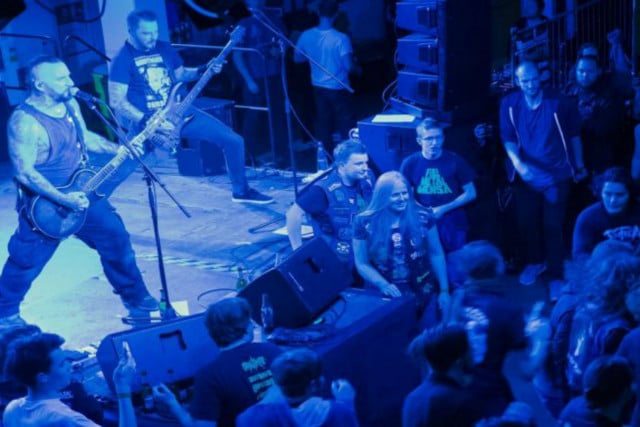 A concert with students. Photo courtesy of Full Metal Mensa.
A concert with students. Photo courtesy of Full Metal Mensa.
Göttingen is also proudly home to a putrid flower – Titanwürz (Amorphophallus titanum) – that blossoms unpredictably for 24 hours once in every 5-10 years. It unfolded 2 meter long leaves this March, duly justifying its standing as the biggest flower in the world. Translating loosely to a “giant misshapen penis”, the blossom reeks of rotten flesh and yet attracts thousands of visitors. This rare plant is a native of Indonesia.
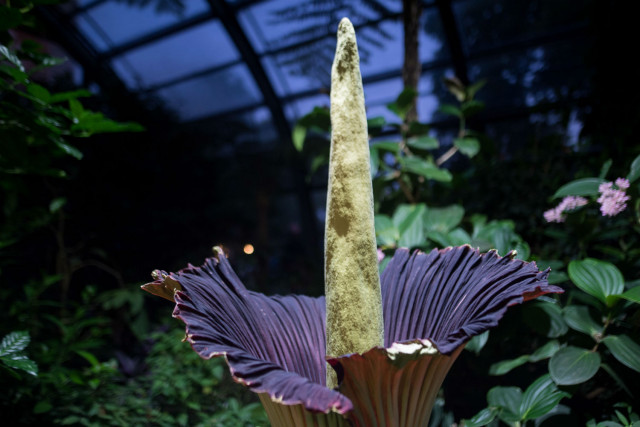 A titanwurst beginning to bloom. Photo: DPA
A titanwurst beginning to bloom. Photo: DPA
And on that pungent note, let’s discover what surprises to the palette this city offers.
Eateries: the power of the potato
After a day of maneuvering the many cobble streets of Göttingen, rest your legs at Kartoffelhaus. You are told that Germans love the humble potato but it won’t truly hit you how much until you open the carb-heavy Menukarte, finding a burger of potato bread with potato patty served alongside potato wedges. It is delicious nevertheless!
The state of Lower Saxony has a long-held tradition of growing asparagus and plenty of restaurants (including this one) will offer a Spargelcremesuppe from mid-April to end of June.
Then cross the Nabel and Wilhelmsplatz to grab a beer at Thanner’s or Trou. Both Kneipe ignite a woody medieval ambience, with Trou going as far as to furnish completely with barrels.
If you are a frugal visitor, exchange your money for the student currency of Göttingen (a.k.a. a Döner) and enjoy it by the Stadtwall before you drink yourself away with a Tiefseetaucher (deep sea diver) – the strongest cocktail in town comprised of Bacardi rum, triple sec, lime syrup and a lot of sugar. The hangover is a prolonged sensation of swaying in the rough seas like a drunken sailor.
To those with an insatiable sweet tooth, Cron & Lanz boasts of the best cakes and pastries in town. A Baumküchen is highly recommended.
A night to remember
As you wrap up your trip, don’t forget to pay a visit to the man who Göttingers deeply respect: Carl Friedrich Gauss. One of the best known scientists from Göttingen, he developed the first electromagnetic telegraph with Wilhelm Weber in 1833.
He worked and died in Göttingen as a mathematical legend known for his calculation of the orbit of Ceres (a lost minor planet) which lead to accurate spotting of the asteroid.
He also described a Gaussian distribution, the “method of least squares”, and devoted his life to the Göttingen Observatory. Because of his efforts, the city became a center of scientific life in Europe. Challenge yourself to explore a former cemetery at midnight (in Cheltenham park) and be overwhelmed at the immensity of standing before Gauss’ grave, helpless in wonder.

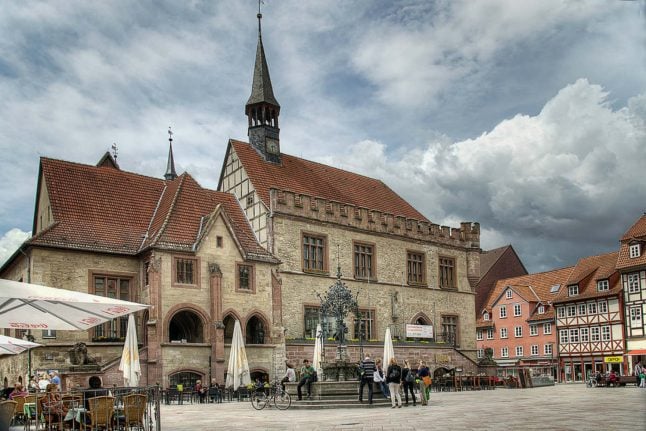

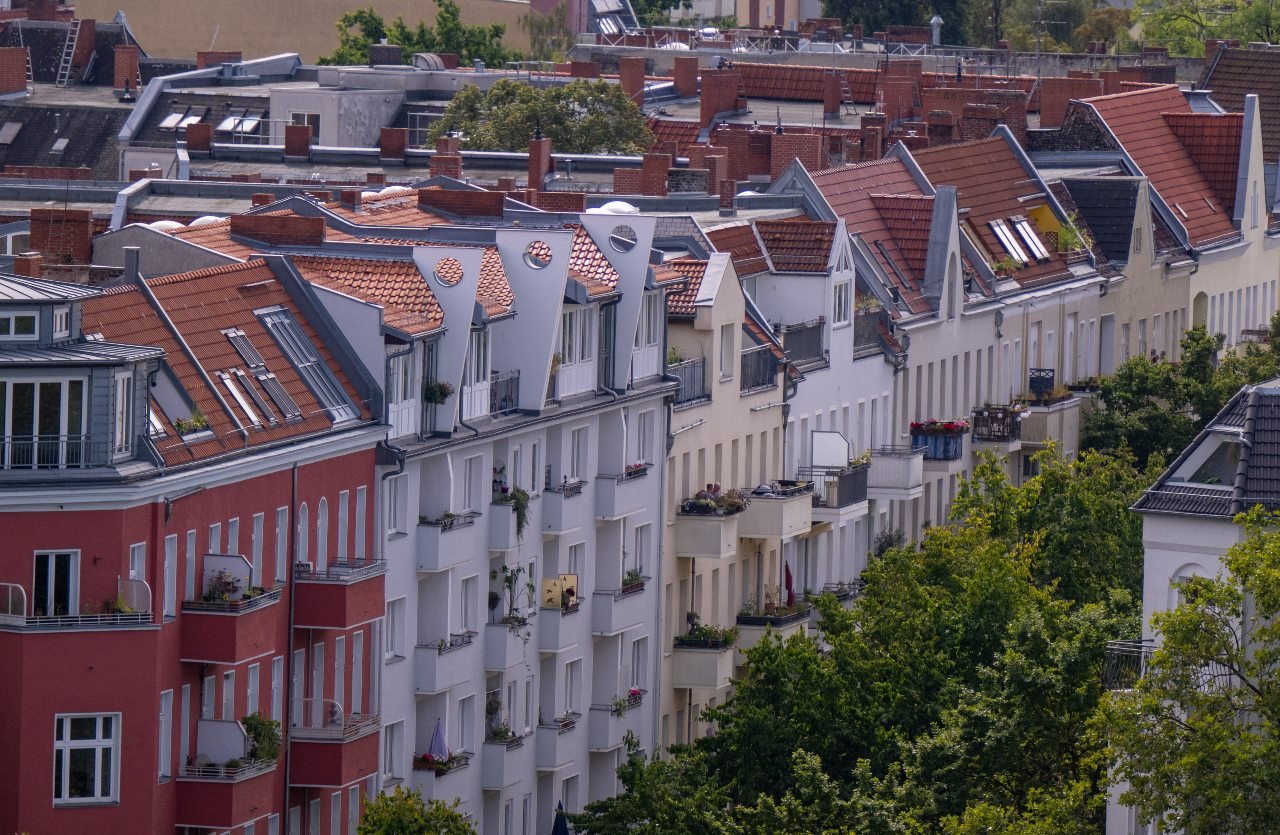

 Please whitelist us to continue reading.
Please whitelist us to continue reading.
Member comments